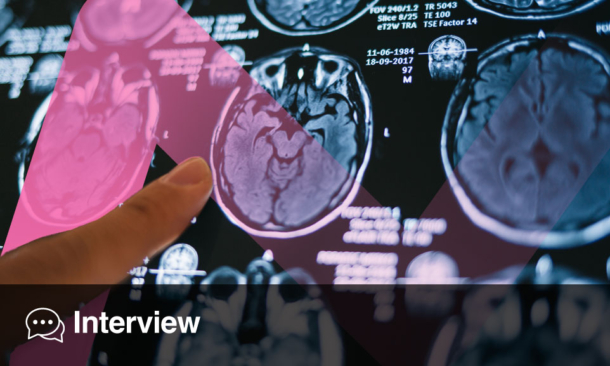The following highlights showcase late breaking research presented at the 10th European Academy of Neurology (EAN) Congress. Topics ranged from the use of multimodal MRI to enhance Parkinson’s disease detection, to an identified link between alterations in brain-derived neurotrophic factor and plasmin-related proteins and regional brain atrophy in alpha-synucleinopathies. Notably, we exhibit the EAN Tournament winner for neurologists in training for basic science, examining the abstract entitled ‘Widespread white matter axonal loss in narcolepsy Type 1’.
Citation: EMJ Neurol. 2024;12[1]:64-70. https://doi.org/10.33590/emjneurol/SAYA5873.
![]()
Narcolepsy Type 1 Linked to Brain White Matter Irregularities
A STUDY presented at the EAN 2024 Congress revealed significant white matter irregularities in the brains of individuals with narcolepsy Type 1 (NT1), a neurological disorder characterised by hypocretin deficiency, excessive daytime sleepiness, and cataplexy.
The study was conducted on postmortem brain tissue from four NT1 donors and 10 control subjects to assess axonal density, axonal injury, and myelin integrity. The regions of interest mainly included subregions of the midbrain, corpus callosum, cortical regions (anterior cingulate and occipital cortex), and the cerebellum, which served as a control region.
Results showed that patients with NT1 showed significantly lower axonal density in the reticular formation, pyramidal tract, corpus callosum, and anterior cingulate gyrus compared to control subjects. No significant differences were found in the cerebellum regarding axonal density, axonal injury, and myelin integrity measures, except for lower myelin density in the secondary visual cortex in patients with NT1.
The results underline the profound impact of NT1 on brain white matter, providing better understanding of the disease’s underlying mechanisms. As the results showed a significant reduction in the axonal density in various brain regions, this suggests that NT1 leads to widespread neuro-degradation, except in the cerebellum, which aligns with expected hypocretin projection patterns.
In conclusion, this study marks a step forward in developing understanding of the neurological impact of NT1. The results align with prior published reports on in vivo brain imaging and typical hypocretin projection patterns. By bringing to light the specific areas of the brain affected by the disease, the research opens new avenues for targeted therapies and interventions aimed at mitigating the debilitating symptoms of NT1. However, further research is needed to fully understand the contributors of the pathophysiology of NT1, and to explore the extent of these findings and their implications for treatment and management strategies.
Long-Term Risks in Young Patients with Stroke
RESEARCH presented at the EAN 2024 Congress has revealed a long-term risk of recurrent vascular events and mortality in young patients with ischaemic stroke or transient ischaemic attack.
Between 2018–2020, the researchers conducted outpatient clinical follow-up assessments on 396 patients aged 18–55 years who had enrolled in one of three European centres with ischaemic stroke or transient ischaemic attack between 2007–2010. During a median follow-up of 11.8 years, 89 (22.5%) patients had experienced a recurrent vascular event, 62 (15.7%) had experienced a cerebrovascular event, and 34 (8.6%) had experienced other vascular events. Furthermore, 27 (6.8%) patients died during or before the follow-up assessment.
The analysis also revealed that over a 10-year period, the incidence rates per 1,000 person-years for recurrent vascular events and cerebrovascular events were 21.6 (95% CI: 17.1–26.9) and 14.9 (95% CI: 11.3–19.3), respectively. Despite the increased occurrence of vascular events reported in the cohort, 22 (13.5%) patients were not receiving secondary preventive medication at the time of the follow-up assessment.The researchers determined that atrial fibrillation present at baseline was significantly associated with a higher risk of recurrent vascular events. This association remained significant even after accounting for demographic factors and comorbidities. Additionally, it was found that cardiovascular risk factors became greater over time.
The results highlight the risk of recurrent vascular events, cerebrovascular events, and mortality in young patients with ischaemic stroke or transient ischaemic attack. Subsequently, future research should aim to develop personalised risk assessment and prevention strategies, and investigate if improved adherence to secondary preventive medications can reduce long-term risks in this patient group.
Alterations in BDNF and Plasmin-Related Proteins Associated with Regional Brain Atrophy in Alpha-Synucleinopathies
A NEW study from the Charles University and Motol University Hospital, Prague, Czechia, was presented this year at the EAN 2024 Congress, held in Helsinki, Finland.
On behalf of their colleagues, Zuzana Nedelska presented the abstract ‘Alterations in BDNF and plasmin-related proteins are associated with regional brain atrophy in alpha-synucleinopathies’. As explained by Nedelska, plasmin is a serine protease that is regulated by activating tissue plasminogen activator, and inhibits plasminogen activator inhibitor-1 (PAI-1). Found in the blood serum, it acts to dissolve fibrin blood clots.
In this study, the team set out to better understand the associations of brain-derived neurotrophic factor (BDNF) with regional brain atrophy in alpha-synucleinopathies, such as Parkinson’s disease (PD), dementia with Lewy bodies (DLB), and multiple system atrophy (MSA).
The study cohort comprised 34 patients with DLB, 12 patients with MSA, and 11 patients with PD, compared with 11 cognitively unimpaired controls, evaluated using brain MRI. Protein serum concentrations of tissue plasminogen activator PAI-1 and BDNF were quantified using ELISA and compared across the groups. An automated algorithm, called FreeSurfer v7.0 (Labratories for Computational Neuroimaging, Athinoula A. Martinos Center for Biomedical Imaging, Boston, Massachusetts, USA), measured regional brain atrophy.
Results revealed dysregulation in plasmin synthesis, notably across levels in PA-1 (p<0.001). For instance, patients with PD (p=0.027) and MSA (p<0.001) showed elevated levels of PA-1 compared to the control group. Moreover, BDNF levels were found to be elevated in DLB (p<0.001), PD (p<0.001), and MSA (p=0.012) compared to controls, and PAI-1/BDNF ratio differed in MSA versus DLB (p=0.008).
The authors concluded that alterations in BDNF and plasmin-related proteins are associated with regional brain atrophy in alpha-synucleinopathies. They theorised that the elevated BDNF levels additionally suggest a compensatory mechanism. These findings are highly significant, as the plasmin system and BDNF could be potential future therapeutic targets in PD, DLB, and MSA.
The Future of Rare Disease Treatment
NOVEL research presented at the EAN 2024 Congress has demonstrated the benefit of treatment of neurological signs and symptoms with N-acetyl-L-leucine (NALL) in patients with Niemann-Park disease Type C (NPC).
The research, helmed by Tatiana Bremova-Ertl, University Hospital Inselspital Bern, Germany, involved a Phase II, double-blind, randomised trial, followed by an open-label extension phase, to evaluate the long-term, neuroprotective effects of NALL for patients with NPC.
The patients were administered NALL orally two to three times per day, the study’s primary endpoint being the modified 5-domain NPC Clinical Severity Scale (CSS) (range 0–25 points; lower score representing better neurological status). Comparisons were made to the expected annual trajectory of disease decline established in published natural history studies. Exploratory endpoints included the 17-domain NPC-CSS (excluding hearing) and Scale for the Assessment and Rating of Ataxia (SARA).
In total, 54 patients (aged 6–57 years) were treated throughout the extension phase. The researchers found that, after 12 months, the mean (±standard deviation) change from baseline on the 5-domain NPC-CSS was -0.115 (±2.6) and 1.5±3.1 in the historical cohort (mean difference: 1.56; 95% CI: 0.31–2.92; p<0.017). This meant a 108% reduction in annual disease progression. The result of the 17-domain NPC-CSS was supportive of the primary analysis, and the improvements in neurological status demonstrated in the Parent Study’s primary SARA endpoint were sustained over the long-term follow up.
The team concluded that, for patients with NPC, treatment with NALL after 1 year was associated with a significant reduction in disease progression. These results were consistent with a neuroprotective, disease-modifying effect.
Achieving Goal-Concordant Care After Severe Acute Brain Injury
LOSS of decisional capacity in patients with severe acute brain injury (SABI) often leaves families and clinicians in the intensive care unit (ICU) to navigate clinical decisions together.
New research presented at the EAN 2024 Congress evaluated the impact of prognostic scores on goal-concordant care from the perspective of clinicians, families, and patients.
The study, conducted at Lausanne University Hospital in Switzerland, enrolled 110 patients, 71 relatives, and 205 clinicians. At the time of enrollment, 65% of families reported having discussions about prognosis with clinicians, while 48% discussed the patient’s presumed wishes. Regarding goal-concordant care, 66% of families and clinicians agreed on their estimates of the patient’s prognosis. Both groups felt that prognostic scores and their personal estimates significantly influenced their decisions in 46% and 55% of cases, respectively.
Results showed that the use of hypothetical prognostic scoring could markedly impact decision-making. For instance, when patients were given a 50% versus 90% risk of dependency, presumed decisions to withdraw life-sustaining treatment (LST) increased from 29% to 44%, respectively. Furthermore, 52% of participants expressed that they would strongly regret prolonging LST if the patient survived with severe, irreversible deficits, whereas 40% feared withdrawing LST even if the chances of recovery were extremely low.
Prognostic scores and personal assessments can have a substantial influence on decisions made by families. The authors concluded that early discussions about prognostic estimates and goals-of-care are crucial in making decisions that align with the patient’s wishes.
Enhancing Parkinson’s Disease Detection with Multimodal MRI
A NEW study, presented at the EAN 2024 Congress, aimed to create a 3D convolutional neural network (CNN) utilising multimodal MRI to differentiate between control subjects and patients with Parkinson’s disease (PD), as well as to use CNN to forecast the progression of PD.
Three cohorts were chosen for this study. The first cohort included 86 patients with mild PD, 62 patients with moderate-to-severe PD, and 60 controls; the second cohort included 56 patients with mild PD and 20 controls from the Parkinson’s progression markers initiative (PPMI) database; and the third cohort included 91 patients with mild PD and 38 controls. All participants underwent an MRI scan at baseline, as well as a clinical evaluation at baseline and at the 2-year follow-up. All patients with mild PD were classified as stable or worsening using k-means clustering based on baseline and follow-up Unified Parkinson’s Disease Rating Scale III (UPDRS-III) values. CNNs were applied.
The CNN model demonstrated the ability to distinguish between patients with moderate-to-severe PD and controls, achieving a commendable level of performance. For patients with moderate-to-severe PD compared to controls, the accuracy rate on the test dataset was nearly 75%, relying solely on MRI data for classification. However, when considering mild PD versus controls, the accuracy rate was approximately 65% on the test set, highlighting the challenges in extracting discriminative features during the early stages of the disease. In differentiating between stable and worsening PD, the CNN achieved an accuracy rate of over 70% on the test set by combining raw MRI and clinical data.
By integrating MRI data with clinical and demographic information, CNN demonstrated promising results. CNN offers a valuable tool for early diagnosis and personalised treatment planning for patients with PD.






